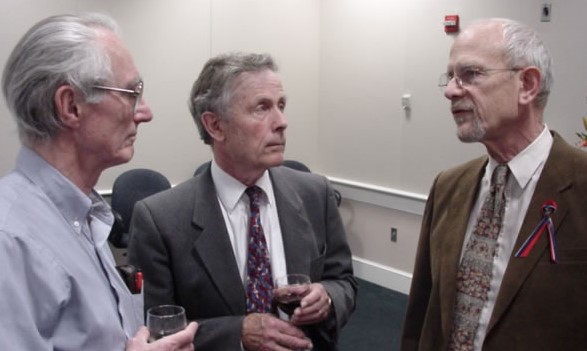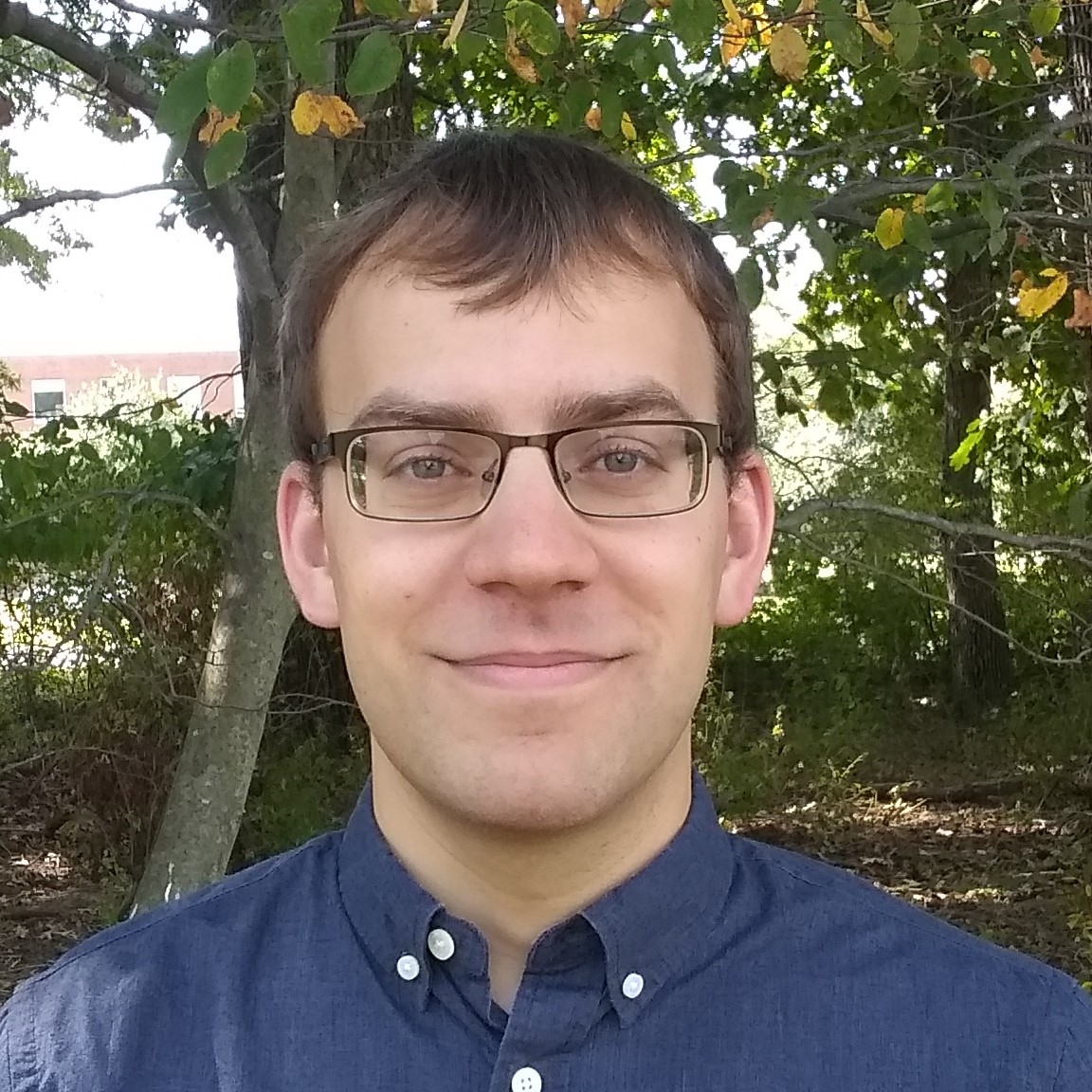Rare “Lazarus Superconductivity” Observed in Rediscovered Material
- Details
- Category: Research News
- Published: Tuesday, October 08 2019 07:02
 A team of researchers has observed a rare phenomenon called re-entrant superconductivity in the material uranium ditelluride. Nicknamed “Lazarus superconductivity,” the phenomenon occurs when a superconducting state arises, breaks down, then re-emerges in a material due to a change in a specific parameter—in this case, the application of a very strong magnetic field. The discovery furthers the case for uranium ditelluride as a promising material for use in quantum computers. Image credit: Emily Edwards/JQI
A team of researchers has observed a rare phenomenon called re-entrant superconductivity in the material uranium ditelluride. Nicknamed “Lazarus superconductivity,” the phenomenon occurs when a superconducting state arises, breaks down, then re-emerges in a material due to a change in a specific parameter—in this case, the application of a very strong magnetic field. The discovery furthers the case for uranium ditelluride as a promising material for use in quantum computers. Image credit: Emily Edwards/JQI
Nicknamed “Lazarus superconductivity” after the biblical figure who rose from the dead, the phenomenon occurs when a superconducting state arises, breaks down, then re-emerges in a material due to a change in a specific parameter—in this case, the application of a very strong magnetic field. The researchers published their results on October 7, 2019, in the journal Nature Physics.
“This is a very recently discovered superconductor with a host of other unconventional behavior, so it's already weird,” said Adjunct Assistant Professor Nicholas Butch, a physicist at the NIST Center for Neutron Research. “[Lazarus superconductivity] almost certainly has something to do with the novelty of the material. There's something different going on in there.”
The previous research, published on August 16, 2019 in the journal Science, described the rare and exotic ground state known as spin-triplet superconductivity in uranium ditelluride. The discovery marked the first clue that uranium ditelluride is worth a second look, due to its unusual physical properties and its high potential for use in quantum computers.
“This is indeed a remarkable material and it’s keeping us very busy,” said Johnpierre Paglione, a professor of physics at UMD, the director of UMD’s Center for Nanophysics and Advanced Materials (CNAM; soon to be renamed the Quantum Materials Center) and a co-author of the paper. “Uranium ditelluride may very well become the ‘textbook’ spin-triplet superconductor that people have been seeking for dozens of years and it likely has more surprises in store. It could be the next strontium ruthenate—another proposed spin-triplet superconductor that has been studied for more than 25 years.”
Superconductivity is a state in which electrons travel through a material with perfect efficiency. By contrast, copper—which is second only to silver in terms of its ability to conduct electrons—loses roughly 20% power over long-distance transmission lines, as the electrons bump around within the material during travel.
Lazarus superconductivity is especially strange, because strong magnetic fields usually destroy the superconducting state in the vast majority of materials. In uranium ditelluride, however, a strong magnetic field coupled with specific experimental conditions caused Lazarus superconductivity to arise not just once, but twice.
For Butch, Paglione and their team, the discovery of this rare form of superconductivity in uranium ditelluride was serendipitous; the study’s lead author, CNAM Research Associate Sheng Ran, synthesized the crystal accidentally while attempting to produce another uranium-based compound. The team decided to try some experiments anyway, even though previous research on the compound hadn’t yielded anything unusual.
The team’s curiosity was soon rewarded many times over. In the earlier Science paper, the researchers reported that uranium ditelluride’s superconductivity involved unusual electron configurations called spin triplets, in which pairs of electrons are aligned in the same direction. In the vast majority of superconductors, the orientations—called spins—of paired electrons point in opposite directions. These pairs are (somewhat counterintuitively) called singlets. Magnetic fields can more easily disrupt singlets, killing superconductivity.
Spin triplet superconductors, however, can withstand much higher magnetic fields. The team’s early findings led them to the National MagLab, where a unique combination of very high-field magnets, capable instrumentation and resident expertise allowed the researchers to push uranium ditelluride even further.
At the lab, the team tested uranium ditelluride in some of the highest magnetic fields available. By exposing the material to magnetic fields up to 65 teslas—more than 30 times the strength of a typical MRI magnet—the team attempted to find the upper limit at which the magnetic fields crushed the material’s superconductivity. Butch and his team also experimented with orienting the uranium ditelluride crystal at several different angles in relation to the direction of the magnetic field.
At about 16 teslas, the material’s superconducting state abruptly changed. While it died in most of the experiments, it persisted when the crystal was aligned at a very specific angle in relation to the magnetic field. This unusual behavior continued until about 35 teslas, at which point all superconductivity vanished and the electrons shifted their alignment, entering a new magnetic phase.
As the researchers increased the magnetic field while continuing to experiment with angles, they found that a different orientation of the crystal yielded yet another superconducting phase that persisted to at least 65 teslas, the maximum field strength the team tested. It was a record-busting performance for a superconductor and marked the first time two field-induced superconducting phases have been found in the same compound.
Instead of killing superconductivity in uranium ditelluride, high magnetic fields appeared to stabilize it. While it is not yet clear exactly what is happening at the atomic level, Butch said the evidence points to a phenomenon fundamentally different than anything scientists have seen to date.
“I'm going to go out on a limb and say that these are probably different—quantum mechanically different—from other superconductors that we know about,” Butch said. “It is sufficiently different, I think, to expect it will take a while to figure out what's going on.”
On top of its convention-defying physics, uranium ditelluride shows every sign of being a topological superconductor, as are other spin-triplet superconductors, Butch added. Its topological properties suggest it could be a particularly accurate and robust component in the quantum computers of the future.
“The discovery of this Lazarus superconductivity at record-high fields is likely to be among the most important discoveries to emerge from this lab in its 25-year history,” said National MagLab Director Greg Boebinger. “I would not be surprised if unraveling the mysteries of uranium ditelluride leads to even stranger manifestations of superconductivity in the future.”
###
This release was adapted from text provided by the National High Magnetic Field Laboratory.
In addition to Butch, Paglione and Ran, UMD-affiliated co-authors of the research paper include physics postdoctoral researcher Yun Suk Eo; physics graduate students I-Lin Liu, Daniel Campbell and Christopher Eckberg; undergraduate physics major Paul Neves, physics faculty assistant Wesley Fuhrman; CNAM (QMC) Assistant Research Scientist Hyunsoo Kim and CNAM (QMC) Associate Research Scientist Shanta Saha.
The research paper, “Extreme magnetic field-boosted superconductivity,” Sheng Ran, I-Lin Liu, Yun Suk Eo, Daniel Campbell, Paul Neves, Wesley Fuhrman, Shanta Saha, Christopher Eckberg, Hyunsoo Kim, Johnpierre Paglione, David Graf, Fedor Balakirev, John Singleton and Nicholas Butch, was published in the journal Nature Physics on October 7, 2019.
This work was supported by the Schmidt Science Fellows program (in partnership with the Rhodes Trust), the National Science Foundation (Award Nos. DMR-1610349, DMR-1157490, DMR-1644779), the U.S. Department of Energy (Award No. DE-SC-0019154), the Gordon and Betty Moore Foundation’s EPiQS Initiative (Award No. GBMF4419), and the State of Florida. The content of this article does not necessarily reflect the views of these organizations.

